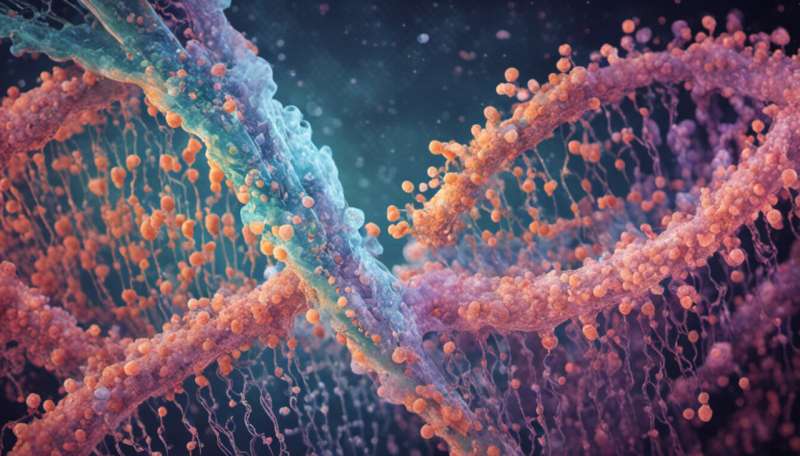Credit: AI-generated image (disclaimer)
Mammalian cells pack their genome into a highly organized three-dimensional structure, in which the thread-like DNA is wrapped tightly around spool-like proteins. This structure, known as chromatin, plays an important role in the regulation of gene activity. An international team of researchers led by Yijun Ruan at the A*STAR Genome Institute of Singapore have now revealed a key mechanism by which the chromatin regulates gene activity.
Ruan and his co-workers developed a state-of-the-art sequencing technology called Chromatin Interaction Analysis with Paired-End-Tag (ChIA-PET), for performing the genome-wide mapping of long-range interactions between chromatins. The technology looks at different regions of regulatory DNA sequences including enhancers and promoters, which regulate gene expression by binding an enzyme called RNA polymerase II (RNAPII).
The researchers identified approximately 20 million interactions in their initial analysis. They grouped these interactions into one of three categories: interactions between promoters and nearby DNA sequences within the same gene, interactions between promoters and enhancers (which are located outside the gene on the same chromosome), and interactions between promoters on different genes.
The researchers found that interacting genes are not only expressed but also regulated in a co-ordinated manner. Genetic errors at one gene can propagate to other genes that interact with it. Ruan and his team believes that their findings can explain why some genetic diseases exert a wide variety of effects on patients.
The researchers also found that interactions between promoters could have a combinatory effect. For example, some weak promoters could function as enhancers to regulate other promoters through interactions. Ruan and his team suggest that the classical definition of a promoter may be out of date.
The multi-gene complexes observed in this study are, in principle, similar to the ‘operons’ found in bacterial chromosomes. An operon is a cluster of genes whose functions are under the control of a single promoter.
Scientists have always tried to understand how the large number of genes in an organism is regulated and coordinated to carry out the genetic programs encoded in the genome for cellular functions in mammalian cells. It has been viewed that genes in higher organisms are individually expressed, while multiple related genes in low organisms like bacteria are arranged linearly together as operons and transcribed in single units.
“Our findings show that although genes in human genomes are located far away from each other, related genes are in fact organised through long-range chromatin interactions and higher-order chromosomal conformations,” says Ruan. “The discovery of the mechanism could open up new understanding in the genetic elements underlying human diseases.”




















